
Gardening with Perennials
Lessons from Chicagos Lurie Garden
NOEL KINGSBURY
THE UNIVERSITY OF CHICAGO PRESS
Chicago and London
The University of Chicago Press, Chicago 60637
The University of Chicago Press, Ltd., London
2014 by Noel Kingsbury
All rights reserved. Published 2014.
Printed in China
23 22 21 20 19 18 17 16 15 14 1 2 3 4 5
ISBN-13: 978-0-226-43745-3 (paper)
ISBN-13: 978-0-226-11855-0 (e-book)
DOI: 10.7208/chicago/9780226118550.001.0001
Library of Congress Cataloging-in-Publication Data
Kingsbury, Noel, author.
Gardening with perennials : lessons from Chicagos Lurie Garden / Noel Kingsbury.
pages cm
Includes bibliographical references and index.
ISBN 978-0-226-43745-3 (pbk. : alk. paper)ISBN 978-0-226-11855-0 (e-book) 1. Perennials. 2. Lurie Garden (Chicago, Ill.) I. Title.
SB434.K 567 2014
635.932dc23
2013022933
 This paper meets the requirements of ANSI/NISO Z39.48-1992 (Permanence of Paper).
This paper meets the requirements of ANSI/NISO Z39.48-1992 (Permanence of Paper).
Contents
Since its opening on July 16, 2004, the Lurie Garden in Chicagos Millennium Park has attracted an enormous amount of attention. Hundreds, sometimes thousands, of people pass through it every day, often on a regular basis. Its rich array of plant life creates endless talking points as it grows, flowers, and dies back through the year. The wild birds and insects that visit have become a big part of the garden experience too. Many of its visitors with gardens of their own have wondered about how they might have some of the Lurie magic back at home.
The idea for this book arose out of a conversation with Colleen Lockovitch, the chief horticulturalist at the garden from 2004 to 2009. We felt that there was a need to explain more about the plants in the garden to its many visitors and admirers, and in particular to explain how they could be used in home gardens. This book is the resultan introduction to growing perennials. It introduces some basic garden concepts, especially with regard to a continental climate, like that of the American Midwest. Colleens successor as horticulturalist, Jennifer Davit, has also been involved with the book.
Perennials offer more for the home gardener than any other group of plants. They are small enough to make possible creative planting design in restricted spaces and long-lived enough to develop continuity and improve the sustainability of the garden. In writing this, we very much hope that more people will realize the pleasure, peace, and passion of gardening and working with plants.
This book introduces garden perennials, using the plants of the Lurie Garden as a guide. It is not intended to be a comprehensive guide to perennials but starts with the idea that the range of plants used in the Lurie Garden forms a good basis for home gardeners new to growing perennials or indeed to the whole world of gardening. The range of perennials in the Lurie Garden is actually very wide, although with an emphasis on species that flourish in sun rather than shade. It also includes many regionally native speciesmore than half.
Readers may wonder how come an Englishman is writing a book about a garden in Chicago. They might also like to ask why the garden was designed by a Dutchman (Piet Oudolf). The answer is that gardening has become a very global business. Many of the plants American gardeners grow are of European or Asian origin, and many of our garden plants in Europe are North American. Seeing plants grow in different places is an important part of the job, and seeing them growing in the wild is a particularly special privilege. I shall never forget traveling in Pakistan in 2005 and seeing Russian sage (a Lurie Garden plant) and several other plants familiar from gardens, growing wild in incredibly harsh conditions.
Over the last few years, I have undertaken research on long-term plant performance and learned a lot about how plants live and spreadand sometimes die! Many of these factors are unique to the plant, no matter where it is growing. Choosing plants that will survive for many years, but also not spread invasively, is crucial to satisfying and sustainable gardening. The plants in the Lurie Garden have been chosen for reliability and longevity. The majority will thrive on a wide range of soils and across a wide climatic range. As we shall see, the plants here can thrive with minimal irrigation, no fertilizers, and no chemical control of pests and diseases. This is a very modern garden in its sustainability. The Lurie flora is wide enough to allow for considerable experimentation in the home garden, but is also a truly tried-and-tested range of plants.
The world of perennials is one that is changing rapidly. Many of the Lurie Garden plants are relatively unfamiliar and new to the nursery trade. Almost certainly they will become more familiar, as the garden is not only influencing garden designers in the region but the nursery trade too.
TOO MUCH LAWN?
Whenever I see all those acres of American lawns, I feel guilty! The lawn is a British idea, and in these more sustainability-conscious times even we are having second thoughts about it. Many gardeners, on both sides of the Atlantic, feel that we can live with rather less of a garden feature that needs irrigation in summer; regular feeding, pest control, and weeding to look its best; does not do anything for wildlife (apart from the odd bird pulling out a worm); and looks the same all year round (except when its covered in snow or turned brown in the summer). Lawns are great for sunbathing, childhood games, or hosting barbecue parties, but not for much else. Why not reduce their size and grow perennials instead (or shrubs for that matter)? A selection of perennials offer interest at all seasons from spring to midwinter, can be managed more sustainably than a lawn, and offer far more for garden wildlife.

0.1. Looking over the Lurie Garden from the south, from the roof of the Art Institute of Chicago in late May with the Salvia River making an impact. The area of planting called the Light Plate is to the left of the diagonal path, and the Dark Plate is to the right. The surrounding hedge is the Shoulder Hedge. (Photo: Linda Oyama Bryan)
AMERICAN NATIVES AND GARDEN EXOTICS
A long-standing debate in gardening circles is over the role of native plants. Two issues have pushed this to the top of the agenda. One is that of invasive species, and the other is the role of garden plants in supporting wildlife. The design of the Lurie Garden avoided using any species that might become invasive, that is, spread beyond the garden and potentially into the wild, but there is nothing controversial about this. What is more controversial is just how important it is to use only native species. Ecologists have demonstrated how the web of life in natural environments is dependent on invertebrate species that will only feed on certain (native) plants. They argue that a garden only planted with exotics (i.e., nonnative species) will be an ecological desert. Many gardeners disagree, and, more fundamentally, point out that most people garden to first and foremost create a pleasant environment for themselves, their families, and friends; having attractive and easy-to-maintain plants are their priorities.
The style of planting in the Lurie Garden, and which this book is trying to promote, offers a possible resolution to the native/nonnative plant debate. Over half the species used are Midwest natives. Of those that are not native, many still have value for wildlife: bees are not fussy about whether the flowers they suck nectar from originate in China or the Midwest, and birds do not care whether the seed they are eating from perennial seed heads is of North American or European origin. One of the things that is really special about the Lurie Garden is how it brings together the native and nonnative, helping provide a sanctuary for urban wildlife and for human city dwellers.
Next page
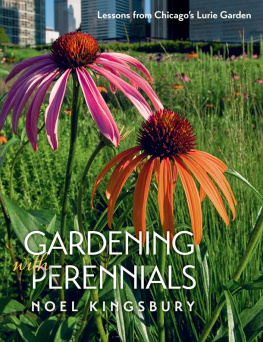
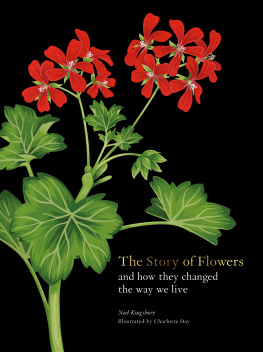
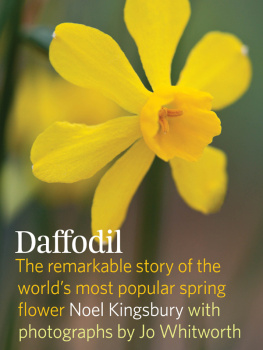
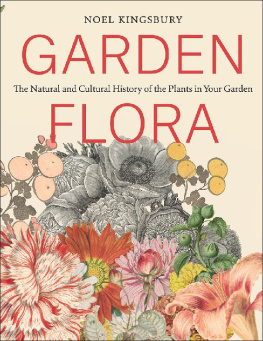

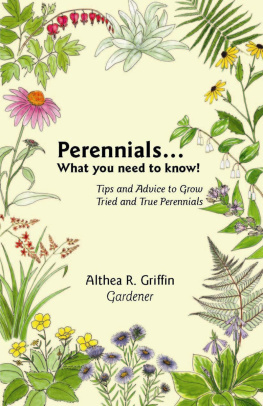
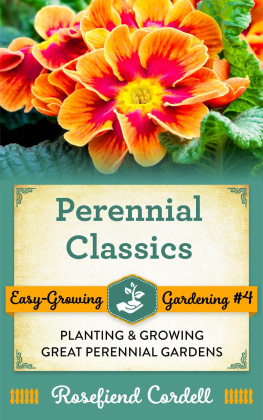
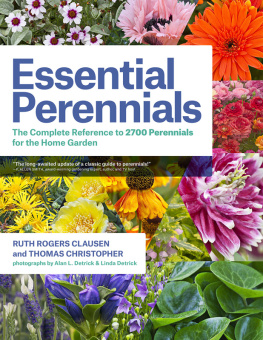
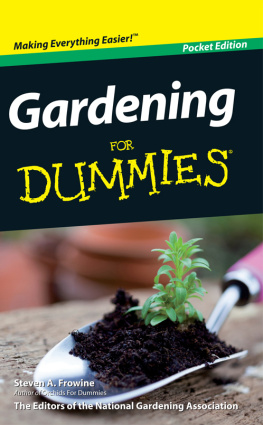
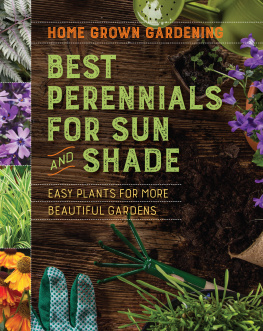

 This paper meets the requirements of ANSI/NISO Z39.48-1992 (Permanence of Paper).
This paper meets the requirements of ANSI/NISO Z39.48-1992 (Permanence of Paper).